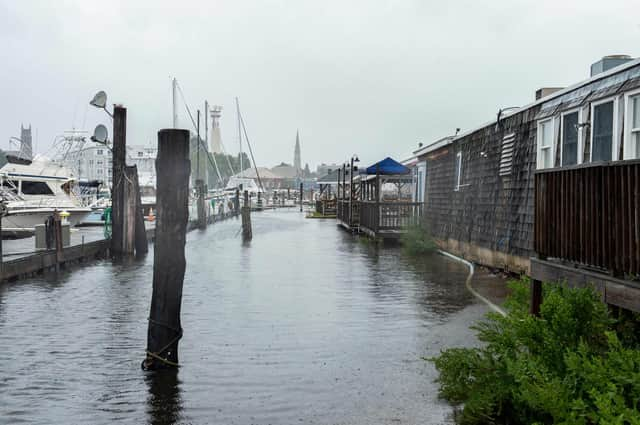Scotland can lead the way with carbon capture and storage - Stuart Haszeldine


The loss of a billion trees to drought in the Brazilian forest, and continuing deforestation now creating more CO2 emissions than the forests can store. Arctic permafrost melts to release fossilised methane, which drives more warming. In Scotland we have experienced floods without precedent in 200 years and now an unusually hot July.
This is all being driven by a small increase in average global temperature of just 1.2°C since 1850. But the world is on a path to at least 4°C warming, and climate change is no longer in the future, it is already happening – faster and with greater impact than computer models predicted. And it is the extremes of hot and cold, wet and dry, which threaten life.
Advertisement
Hide AdAdvertisement
Hide AdDuring the last interglacial warm period 100,000 years ago, atmospheric CO2 was (as now) 415 parts per million (ppm), causing land ice to melt and sea level to rise by five metres more than today. By way of comparison, in this century that would drown Scotland’s coastal cities and wash away transport links. The problem is existential, but solutions exist if we act swiftly and globally.
The hierarchy of a survival recipe is well understood: greater energy efficiency; a switch from hydrocarbons to renewable electricity for power and hydrogen for heat and transport; phasing out hydrocarbon production together with a just transition for fossil-fuel based communities; the use of carbon capture and storage (CCS) on emissions from industrial processes; and recapturing CO2 from the air to balance dispersed and difficult emissions, achieving net zero by 2045 and net negative, permanently, thereafter.
But even faced with compelling evidence, there is international disunity. The G20 states most dependent on cheap energy or the sale of resources vote against radical change because their domestic politics preclude action. Rich industrial states have failed to provide the $100 billion annually agreed in Paris in 2015 to help others move away from carbon emitting energies and industries. Time has now run out. Action on carbon is needed, now.
Scotland and the UK have unique advantages for storing carbon. Our traditional foundation industries have either closed or halved their emissions since 1990 – and they are now being re-invented to produce near-zero emission versions of the same products. Clean power and industry in Scotland are within reach, as the NECCUS alliance shows: www.neccus.co.uk.
Carbon storage is already happening in Scotland using nature-based solutions – planting forestry, enhancing peat accumulation, returning carbon and biochar to the soil. But these actions will only store 10-20 per cent of Scotland’s target of net zero carbon by 2050, and for only tens to hundreds of years. For the long-term goal of net negative, the carbon needs to be securely stored, and soon, in immense tonnages for many thousands of years, deep underground into the geology from where it came.
That means using CCS – on industries, on biomass combustion, and on CO2 recaptured from air. Scotland’s key advantage for these technologies lies in the vast volumes of porous rock, which lie buried deep beneath the North Sea. The legacy and skills of the offshore hydrocarbon and renewables industries mean that these rocks are well understood as secure and reliable stores. They can be accessed by offshore engineering skills, which can also deliver tens of thousands of skilled jobs in a just transition from hydrocarbon extraction to CO2 injection, as the Acorn CCS project in NE Scotland illustrates. A rapidly increasing wave of commercial interest in these rising industries can be seen at www.backthescottishcluster.co.uk
Scotland can now build on its legacy of discovering CO2 and developing an offshore oil and gas industry by once again showing industrial innovation. The next five years provides the chance to create new low-carbon industries and products, which can be designed and manufactured in Scotland and exported worldwide. These are the positive actions, at a crucial point in our history, which can inspire other industrialised countries towards a sustainable future.
Professor Stuart Haszeldine, School of GeoSciences, University of Edinburgh (He is not funded by any members of the Acorn CCS Project).
Comments
Want to join the conversation? Please or to comment on this article.